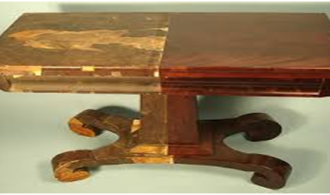Both professional furniture restorers and people who do it for a hobby, have the desire to see an unwanted piece of damaged or old furniture restored to its former glory. There is a buzz when you save something from becoming waste and turn into something to be loved and used again. Where others see rubbish, they see potential.
The idea of restoration is to return the item, as close as possible, to its original state. Often it can be quite a big task and needs more than just cosmetic improvements but requires detailed fixing to make the item usable. If you’ve spotted an item that looks ideal for a project then make sure you know you have the time to devote to it. Often the project will take longer than you think and can turn into a bit of a chore if you don’t have the time for it. Some tasks will be complex and the time it takes will also depend on your skills. If you’re a beginner then it is best to start small and see how you get on. If you have to remove rust then that job in itself can take days so bear this in mind before you take something on.
Another important thing to remember is before you start stripping and sanding an item, make sure you know what it is you have. Inspect your item for marks or labels that might reveal it as a valuable and a real vintage piece. Removing any markings could leave it worthless so make sure you do a little research. Look at the screws and take a look for dovetail joints as these are a sign of age and normally an indication that something is well-made.
Can you make money from restoring old furniture? You could easily set up a business once you’ve established your skills and have a few restored pieces to show in your portfolio. You would need to make a decision about how much you can invest in restoring each piece and how much you can expect to sell it for. If a piece isn’t valuable, it might be an exciting challenge but is not likely to sell for very much. Some items might just require a quick fix but others will become money pits. Popular items to restore include Cast Iron Baths.

Keeping safe should be your top priority as nobody wants to get a splinter in the eye. Wear long sleeved clothing to protect your skin from chemicals which can be found in wood strippers and varnish. Safety glasses are a must to protect your eyes. A mask will also protect you from strong vapours that are produced when stripping or varnishing. Working in a well ventilated room is also a must.
Before starting any work, give the item a good clean as if it’s old then it’s likely to be covered in a layer of grime and dirt. A good scrub could reveal a lovely finish underneath meaning less hard work for you to do! Vegetable based oil soap and warm water is advised and a toothbrush is useful for all the nooks and crannnies.

